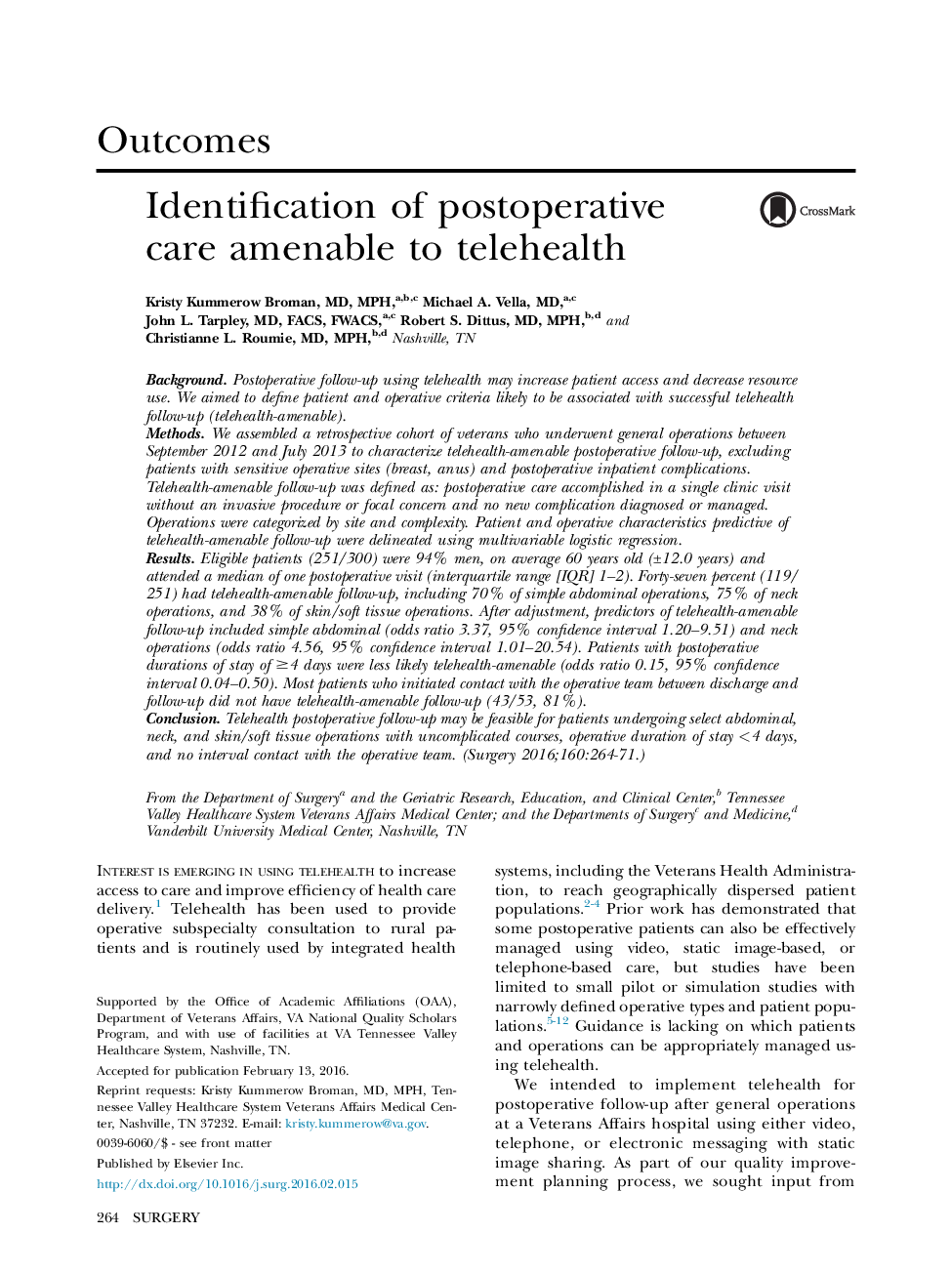| Article ID | Journal | Published Year | Pages | File Type |
|---|---|---|---|---|
| 6254944 | Surgery | 2016 | 8 Pages |
BackgroundPostoperative follow-up using telehealth may increase patient access and decrease resource use. We aimed to define patient and operative criteria likely to be associated with successful telehealth follow-up (telehealth-amenable).MethodsWe assembled a retrospective cohort of veterans who underwent general operations between September 2012 and July 2013 to characterize telehealth-amenable postoperative follow-up, excluding patients with sensitive operative sites (breast, anus) and postoperative inpatient complications. Telehealth-amenable follow-up was defined as: postoperative care accomplished in a single clinic visit without an invasive procedure or focal concern and no new complication diagnosed or managed. Operations were categorized by site and complexity. Patient and operative characteristics predictive of telehealth-amenable follow-up were delineated using multivariable logistic regression.ResultsEligible patients (251/300) were 94% men, on average 60 years old (±12.0 years) and attended a median of one postoperative visit (interquartile range [IQR] 1-2). Forty-seven percent (119/251) had telehealth-amenable follow-up, including 70% of simple abdominal operations, 75% of neck operations, and 38% of skin/soft tissue operations. After adjustment, predictors of telehealth-amenable follow-up included simple abdominal (odds ratio 3.37, 95% confidence interval 1.20-9.51) and neck operations (odds ratio 4.56, 95% confidence interval 1.01-20.54). Patients with postoperative durations of stay of â¥4 days were less likely telehealth-amenable (odds ratio 0.15, 95% confidence interval 0.04-0.50). Most patients who initiated contact with the operative team between discharge and follow-up did not have telehealth-amenable follow-up (43/53, 81%).ConclusionTelehealth postoperative follow-up may be feasible for patients undergoing select abdominal, neck, and skin/soft tissue operations with uncomplicated courses, operative duration of stay <4 days, and no interval contact with the operative team.
